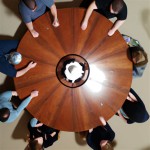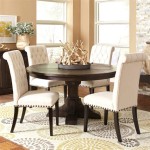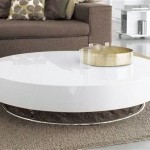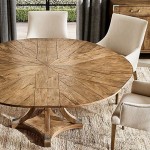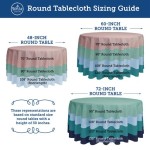How To Fold A Banquet Tablecloth
Proper tablecloth folding is an essential skill within the hospitality industry and for anyone maintaining event spaces. A neatly folded tablecloth not only presents a professional aesthetic but also simplifies storage, minimizes wrinkles, and expedites setup processes. This article will detail the method for efficiently folding a banquet tablecloth, emphasizing techniques for achieving a consistently clean and manageable result.
Banquet tablecloths, typically larger than standard tablecloths, require a systematic approach to folding. The size and weight of the fabric can make the process cumbersome if not executed properly. Following a structured process is key to achieving a uniform and presentable fold.
Preparing the Tablecloth for Folding
The initial preparation significantly impacts the final outcome. Before commencing the folding process, the tablecloth must be clean, dry, and free of any debris. Inspect the fabric for stains or damage. Addressing these issues prior to folding prevents further complications and ensures the tablecloth is ready for immediate use when unfolded.
If the tablecloth has been recently laundered and is still slightly damp, allow it to air dry completely. Folding a damp tablecloth can lead to mildew growth and unpleasant odors. Place the tablecloth on a clean, flat surface, such as a large table or a freshly swept floor. Ensure the surface is free from any sharp objects that could snag or damage the fabric.
Smooth out any existing wrinkles or creases. Minor wrinkles can be addressed by gently stretching the fabric. For more significant wrinkles, consider using a steamer or iron to pre-press the tablecloth. This step is particularly important for high-end events where a flawless presentation is paramount.
Once the tablecloth is clean, dry, and relatively wrinkle-free, identify the center point. This can be done by visually estimating or by folding the tablecloth in half lengthwise and then widthwise, marking the intersection of the folds. The center point serves as a reference for maintaining symmetrical folds.
The Folding Process: Achieving Symmetry and Efficiency
The core of successful tablecloth folding lies in maintaining symmetry and efficiency throughout the process. This involves consistent folding techniques and careful alignment. The following steps outline a method for achieving a professional-looking fold.
Begin by laying the tablecloth flat on the prepared surface. Locate the two opposite corners along the longer side of the tablecloth. Fold each of these corners towards the center point, creating a central seam. The edges of the fabric should align precisely to form a straight line.
Repeat this process with the remaining two corners, folding them towards the center point. The tablecloth should now resemble a smaller rectangle with four layers of fabric. This initial folding establishes the foundation for a symmetrical and manageable final fold.
Next, fold the tablecloth in half lengthwise, bringing one long edge to meet the opposite long edge. Ensure the edges are aligned perfectly to maintain symmetry. Smooth out any wrinkles or creases as you fold. This will result in a long, narrow rectangle.
Now, fold the tablecloth in half again, lengthwise. Again, ensure precise alignment of the edges. This further reduces the size of the tablecloth and prepares it for the final folding steps.
At this point, the tablecloth should be a relatively small and manageable rectangle. Fold the rectangle in thirds. This can be achieved by visually dividing the rectangle into three equal sections and folding one section over the middle section, followed by folding the remaining section over the first fold. This tri-fold creates a compact and easily stackable package.
Consider variations to the tri-fold based on storage space. If more vertical space is available, folding in half again after the tri-fold creates a narrower but taller package. Alternatively, if wider stacks are preferred, omit the final tri-fold and simply keep the tablecloth folded as a rectangle. The optimal folding method depends on the specific storage constraints and the desired aesthetic.
Key Considerations for Optimal Storage and Handling
Proper storage and handling are crucial for maintaining the quality and presentation of folded tablecloths. The environment in which the tablecloths are stored and the manner in which they are handled directly impact their longevity and appearance.
Store folded tablecloths in a clean, dry, and well-ventilated area. Avoid storing them in damp or humid environments, as this can lead to mildew growth and unpleasant odors. Shelving units or designated storage racks are ideal for organizing and protecting the folded tablecloths.
Avoid overcrowding the storage space. Overcrowding can cause wrinkles and creases in the fabric. Allow sufficient space between stacks of tablecloths to prevent excessive pressure and maintain their shape.
When handling folded tablecloths, do so with clean hands. Dirt and oils from hands can transfer to the fabric and cause staining. Consider wearing gloves when handling particularly delicate or valuable tablecloths.
Implement a rotation system for stored tablecloths. Use the oldest tablecloths first to prevent them from remaining in storage for extended periods. This helps to minimize the risk of damage or deterioration.
Regularly inspect stored tablecloths for signs of damage, such as stains, tears, or mildew. Address any issues promptly to prevent further deterioration. Minor stains can often be removed with spot cleaning, while tears may require professional repair.
Consider using acid-free tissue paper between folded tablecloths, particularly for delicate fabrics or those prone to creasing. The tissue paper provides a buffer that helps to prevent wrinkles and protect the fabric from abrasion.
Label each stack of folded tablecloths with information such as the size, color, and fabric type. This simplifies the process of selecting the appropriate tablecloth for each event and reduces the risk of errors.
For transportation, consider using garment bags or plastic bins to protect the folded tablecloths from dirt and damage. This is particularly important when transporting tablecloths to off-site events.
Properly folding and storing banquet tablecloths requires attention to detail and a systematic approach. By following the steps outlined in this article, individuals can ensure that their tablecloths are always presentable and ready for use. Consistent application of these techniques will contribute to efficient operations and a polished aesthetic in any event setting.
In conclusion, the ability to fold a banquet tablecloth effectively is a valuable asset in various professional settings. The combination of careful preparation, precise folding techniques, and appropriate storage methods ensures the longevity and visual appeal of these essential linens.

How To Box A Table 12 Steps With Pictures Wikihow

D A Banquet Table

Folding Rectangular Tablecloths Storage Tips Cv Linens

Push Two Rectangular Tables Together To Make A Square That Seats 10 Cover It With 108 Round Tabl Table Arrangements Wedding Set Up

How To Fold Napkins For A Dinner Party

How To Fold A Tablecloth Reduce Wrinkles Totally Promotional

How To Fold A Tablecloth Reduce Wrinkles Totally Promotional

How To Fold A Rectangular Tablecloth

How To Make A Tablecloth Fit Any Table Shape Or Size O Sewing

How To Fold A Tablecloth Reduce Wrinkles Totally Promotional
Related Posts

